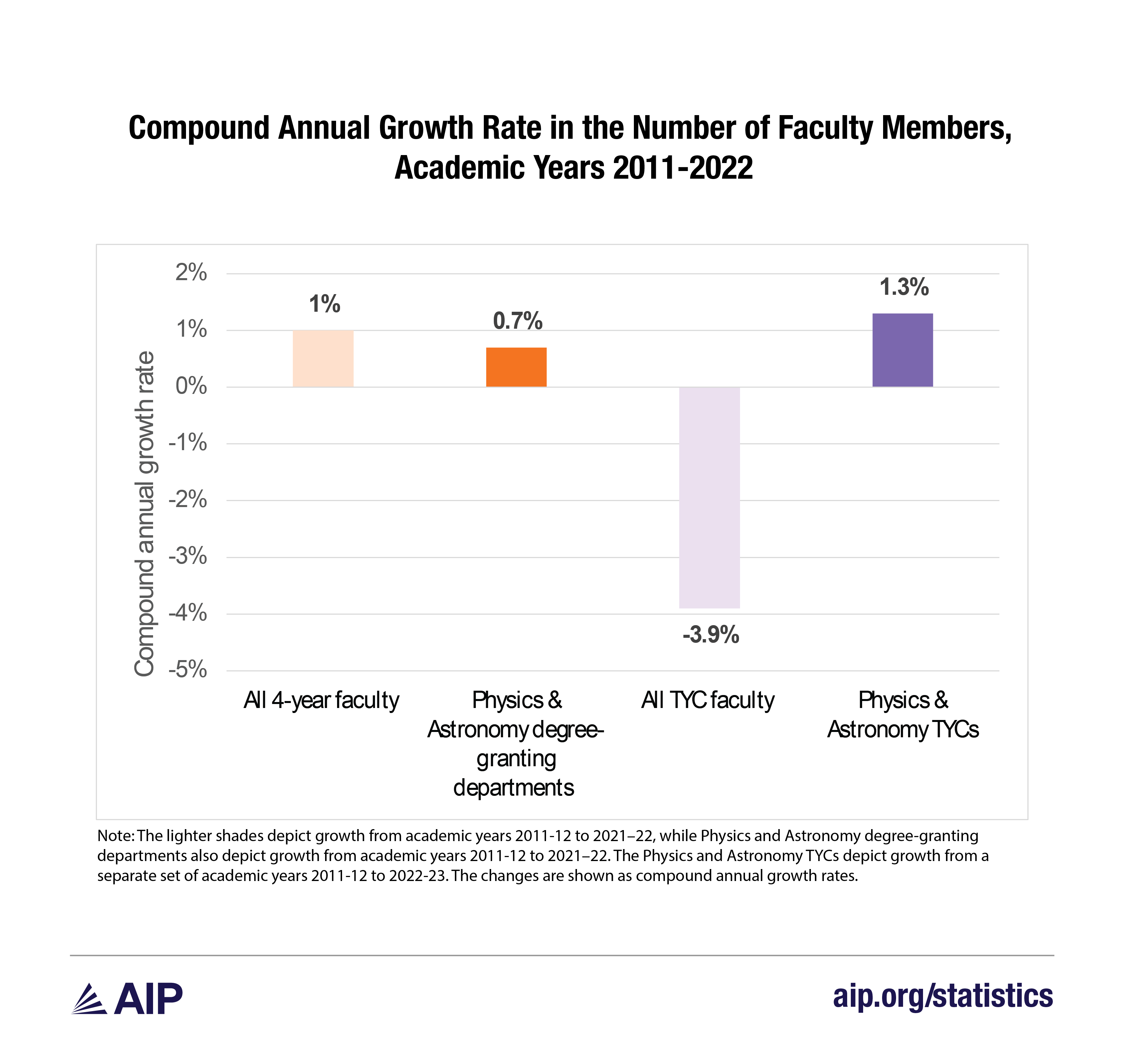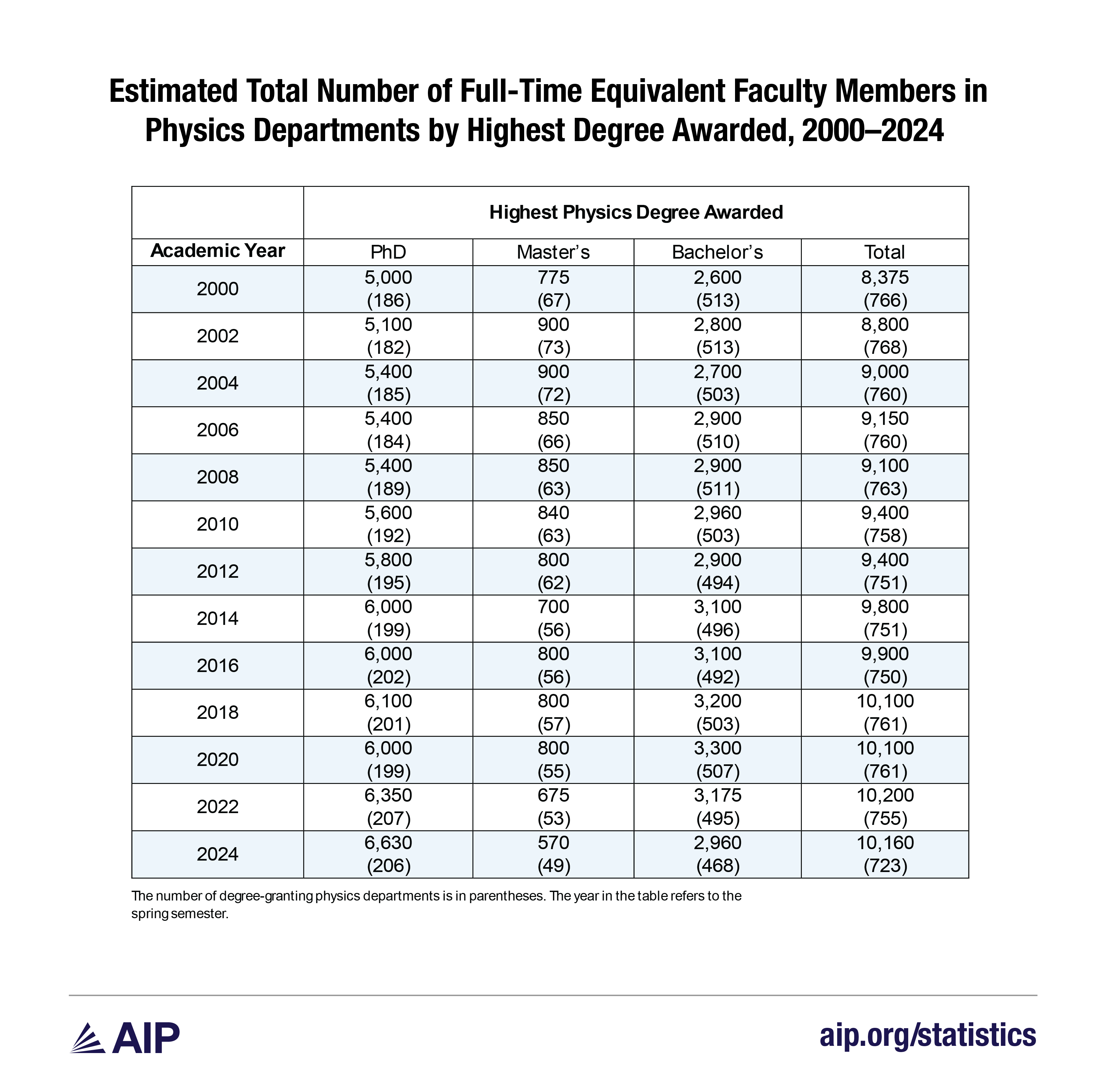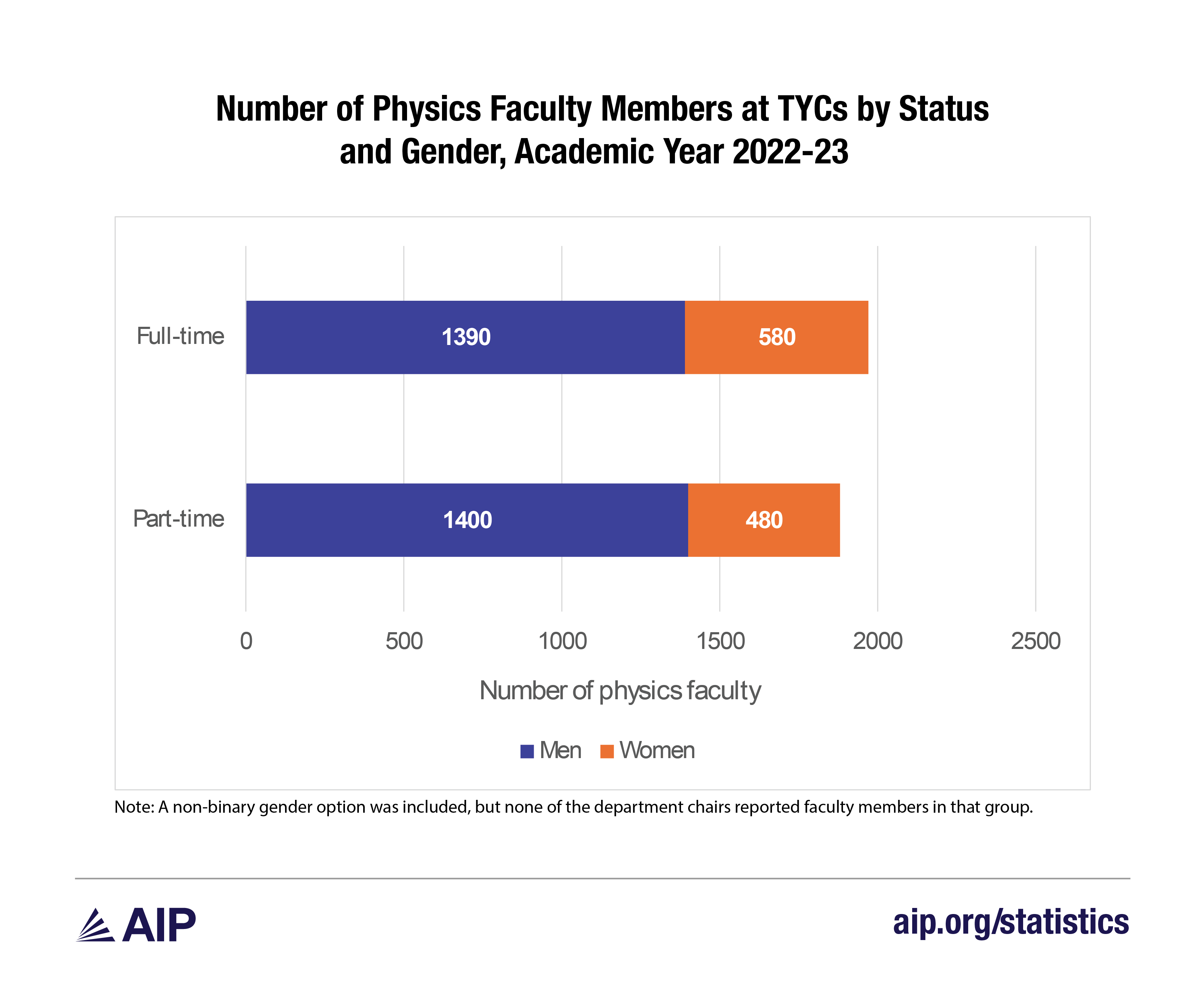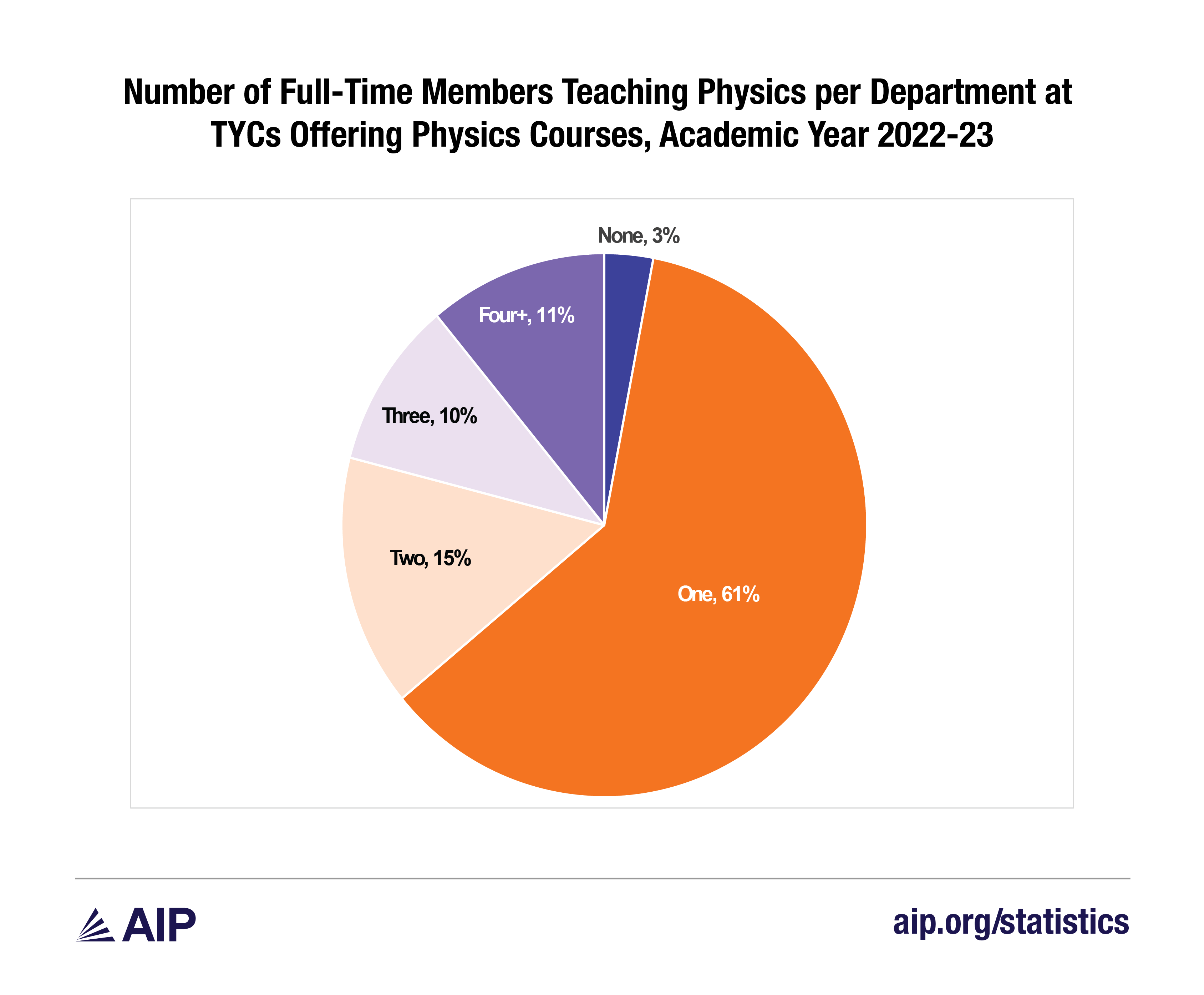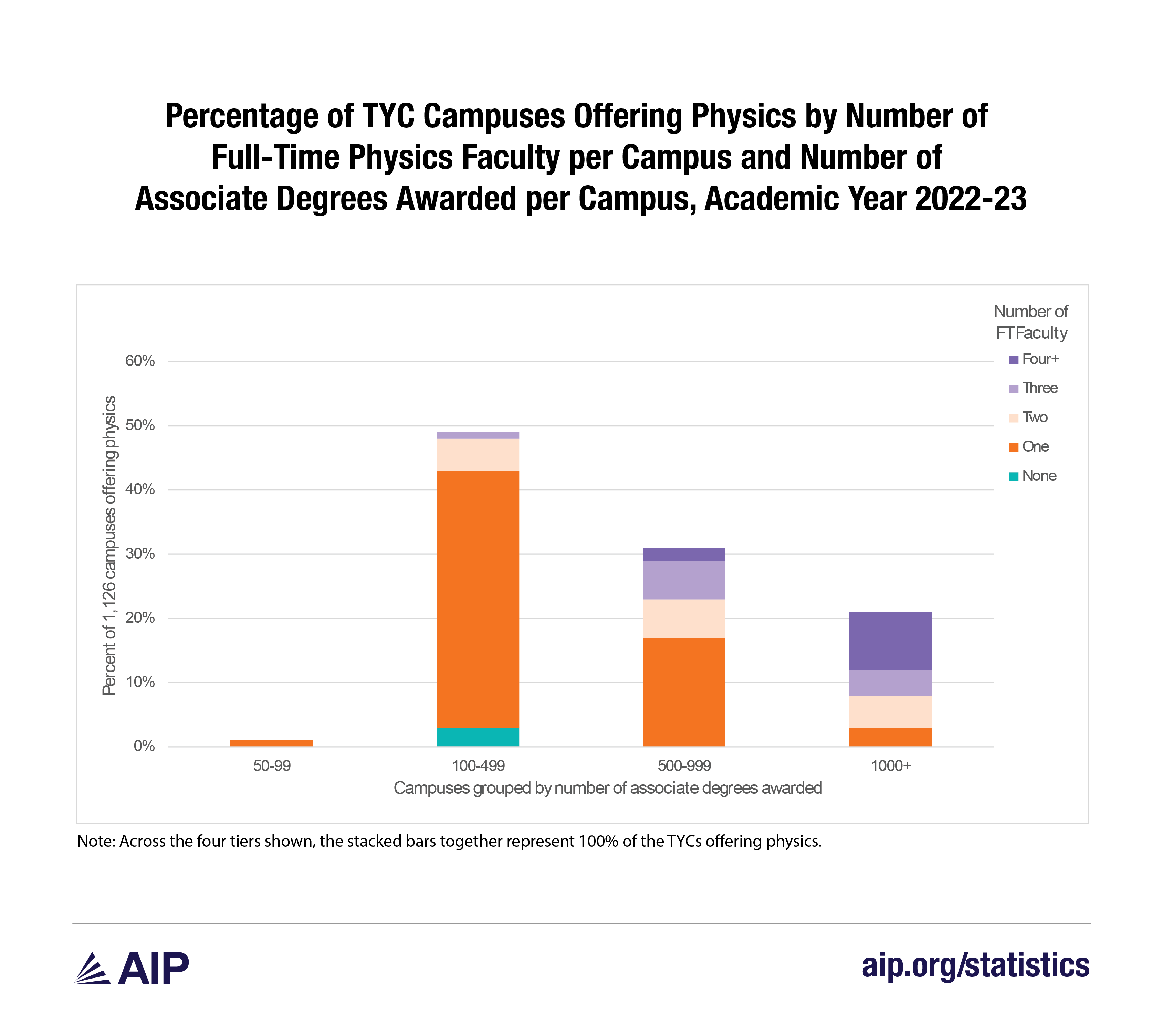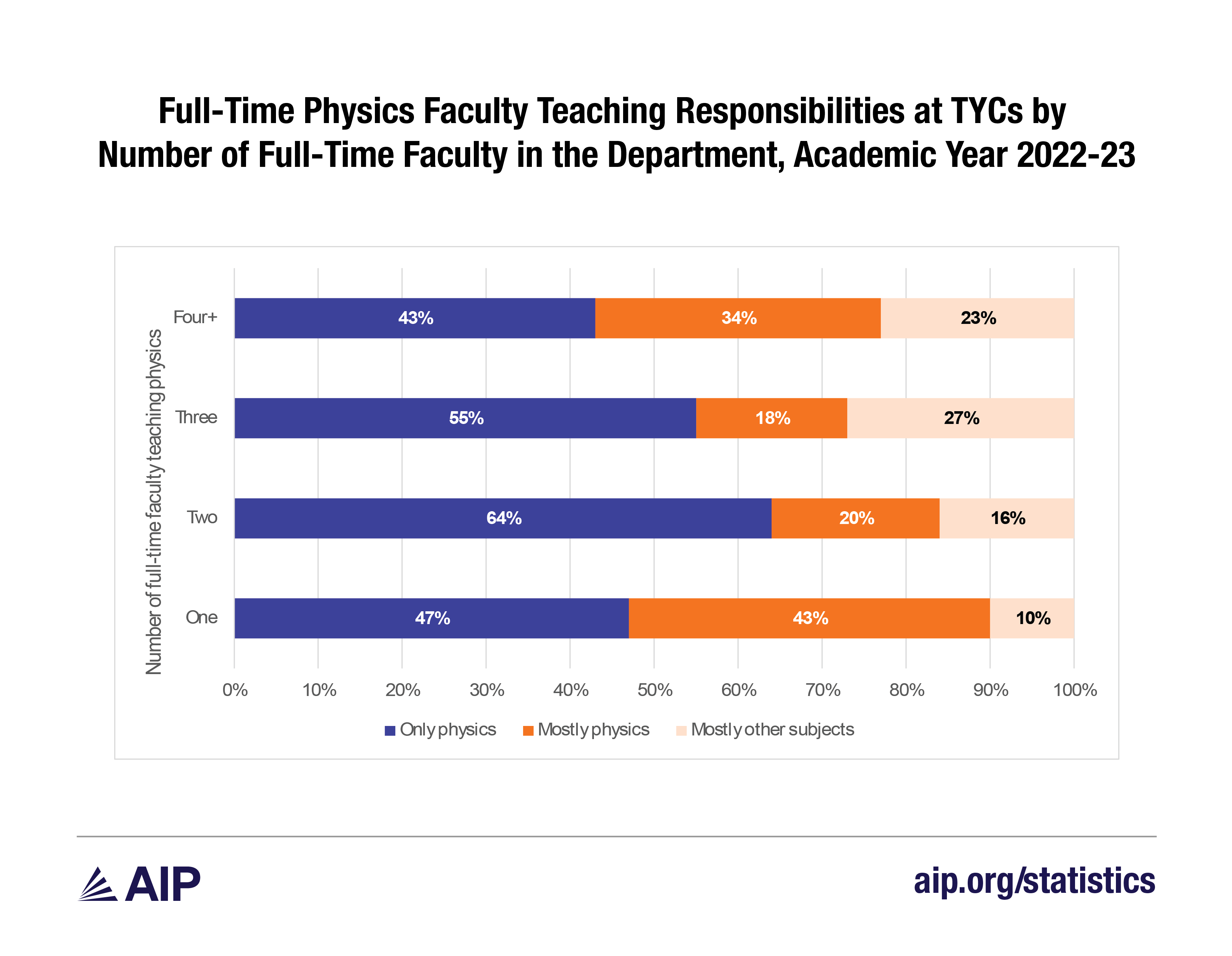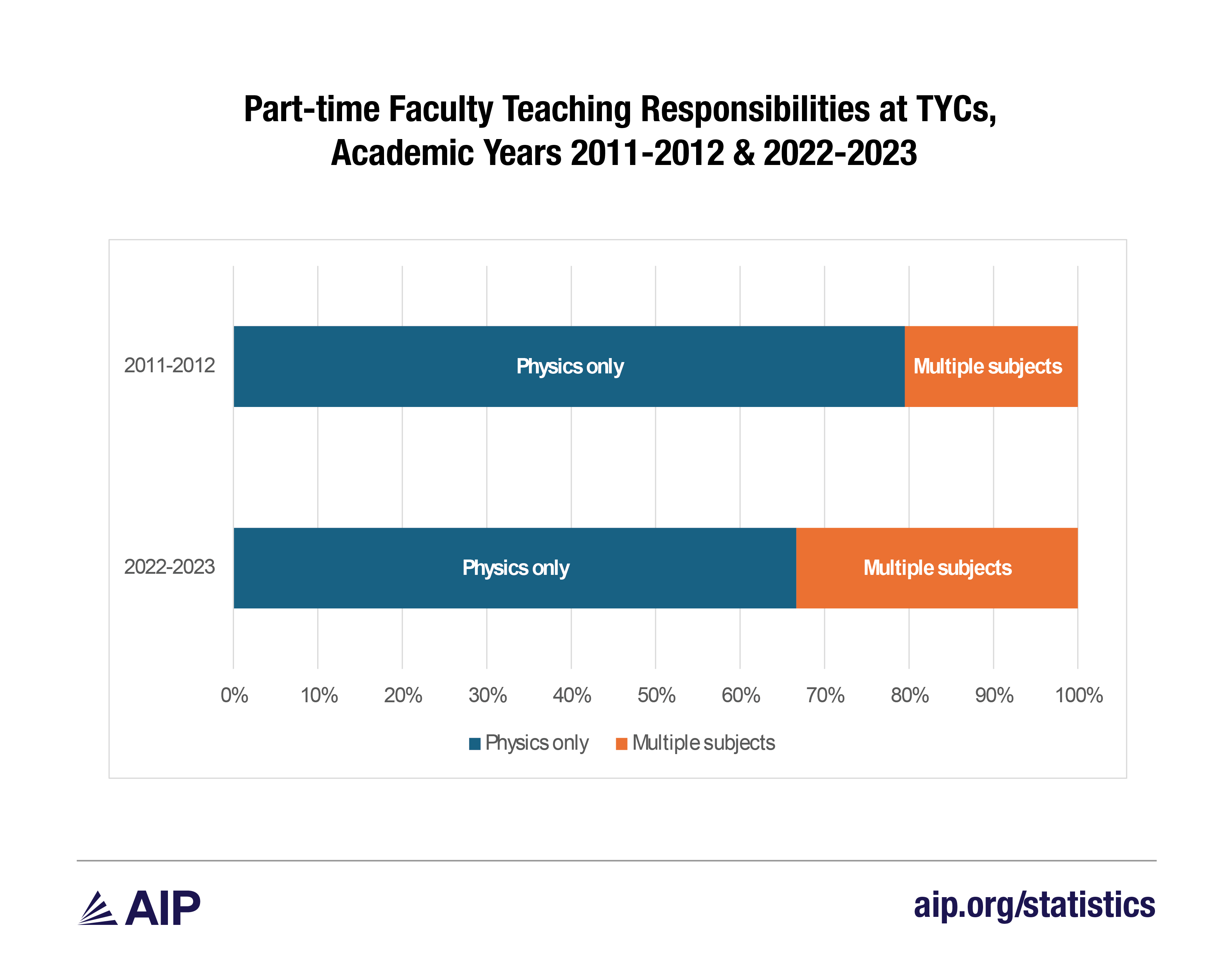Physics and Astronomy Faculty Members at Two-Year Colleges
- In 2012, we found that physics was offered on 1,063 two-year college campuses. In 2023, this number was up to 1,126, suggesting resiliency amid a declining number of TYCs.
- In 2012, we estimated that 3,280 faculty members taught at least one class in physics or astronomy at a two-year institution. In 2023, we estimate that the number had increased to 3,850.
- Thus, the average number of faculty members teaching physics or astronomy per campus went from 3.1 in 2012 to 3.4 in 2023.
- 51% of those faculty members were full-time employees, which is the same as it was in 2012.
Two-year colleges play an important role in physics degree production. For the most recent physics bachelor’s degree recipients, we know that almost one in seven started their undergraduate education at a two-year institution (Pold & Mulvey, 2025
To put these numbers in context, we compare them to the total number of faculty members at TYCs, the total at four-year institutions, and the total teaching physics and astronomy at four-year institutions. We also compare them to our prior results (White & Chu, 2013
Figure 1
Although the TYC faculty number is higher in academic year 2022-23 than in 2011-12, the data gap leaves the slope open to speculation. Supporting data point in different directions. The AIP Academic Workforce Survey on four-year physics institutions, conducted more frequently than the TYC survey, shows an overall steady increase for the four-year college faculty during this period (Porter, A.M., Oman, J. & Tyler, J., 2025
Table 1
Figure 2 displays the number of physics and astronomy faculty members at TYCs by gender and status. The ratio of full-time to part-time physics and astronomy faculty remains unchanged at 51% from academic year 2011-12 (White & Chu, 2013
Figure 2
The distribution of the number of full-time faculty per department also has not changed significantly. Three out of five campuses have only one full-time physics faculty member, and about 3% have no full-time faculty members – only part-time faculty members. (Figure 3). An estimated three out of four (74%) TYC campuses offering physics also offer astronomy. About half of the campuses (46%) that offer astronomy have two or more full-time faculty members, while 86% of campuses that do not offer astronomy have only one full-time faculty member. Three out of five campuses have only one full-time physics faculty member, and about 3% have no full-time faculty members (Figure 3). We count any faculty member who teaches at least one physics course as a physics faculty member, later in this report we share data on the breakdown of faculty who teach only physics, vs teaching other course.
Figure 3
Comparing the number of faculty to the sizes of campuses provides further context. The previous survey measured the sizes of campuses by the number of overall associate degrees awarded per year and divided them into four tiers. Degree production has increased. Among the campuses that offer physics, the proportion awarding 500 or more associate degrees rose from nearly 40% to over 50% since academic year 2011-12 (NCES, 2023
Figure 4
In Figure 5, we examine whether the full-time faculty members teach only physics, mostly physics, or mostly other subjects by the number of full-time faculty members teaching physics at that campus. On most campuses, at least 70% of the faculty members teaching physics teach mostly physics. On campuses with one faculty member teaching physics, nearly half of the faculty members teach only physics. In the larger departments, there is a larger proportion of faculty members teaching mostly other subjects. The number of full-time faculty members teaching only physics is higher than in academic year 2011-12 (White & Chu, 2013
Figure 5
We also looked at whether the part-time faculty members taught only physics or multiple subjects. In Figure 6, we see that TYCs have a lower proportion of part-time faculty members teaching only physics than in academic year 2011-12 (White & Chu, 2013
Figure 6
Survey Methodology
To examine the two-year college landscape for physics and astronomy, we use the individual campus as the focal point. Some institutions offer classes on multiple campuses, so examining the landscape by institution would not truly reflect the scope of the offerings. Working from a list of 1061 TYC institutions from IPEDS that had at least 70% of their degrees awarded were associate degrees and awarded at least 25 associate degrees in 2021, we found 1126 individual campuses offering physics or astronomy in their 2022-24 class schedules through web searches. We found 779 department chair email addresses for these campuses. In April 2023, invitations to participate in the online survey were emailed to these campuses. One in five (21%) responded and provided email addresses to their physics and astronomy faculty. 2352 physics and astronomy faculty were contacted to participate in the faculty survey. 23% responded (531 respondents).
References
White, S & Chu, R. (2013). Number of Physics Faculty in Two-Year Colleges. https://www.aip.org/statistics/number-of-physics-faculty-in-two-year-colleges
Pold, J & Mulvey, P (2025) Physics Bachelors: Two-Year Colleges as a Starting Point. Retrieved at https://www.aip.org/statistics/physics-bachelor-two-year-colleges-as-a-starting-point
Porter, A.M., Oman, J., & Tyler, J. (2025). Estimated total number of full-time equivalent faculty members in physics departments by highest degree awarded, 2000-2024. Retrieved at https://www.aip.org/statistics/the-state-of-the-academic-workforce-in-physics-and-astronomy-2000-2024
NCES (2022). Number of faculty in degree-granting postsecondary institutions, by employment status, sex, control, and level of institution: Selected years, fall 1970 through fall 2022. https://nces.ed.gov/programs/digest/d23/tables/dt23_315.10.asp
NCES (2023). Integrated Postsecondary Education Data System (IPEDS) database. https://nces.ed.gov/ipeds/datacenter/DataFiles.aspx?year=2022&sid=29419065-40ad-4f23-b250-32d023614dc4&rtid=7




